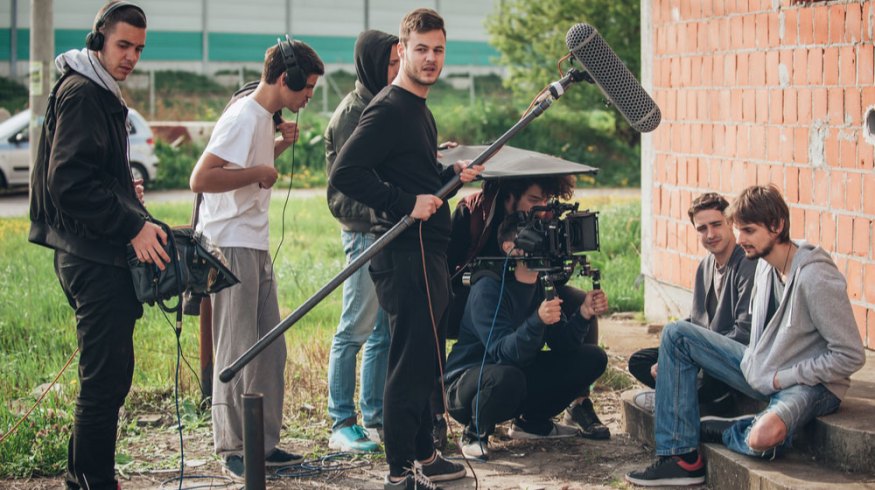
How a Video About Cooking Meat Changed My View of Filmmaking
Let’s explore the multiple tiers of filmmaking, where you currently fit in, and how you can break into the next level of your craft.
Finding your place and comfort level within filmmaking is important. I want to break down the multiple levels/tiers of the craft, from newbie to Hollywood, and a few steps in-between. This might help you find where you currently fit in and possibly how to break into the next step of your productions.
Okay, I know the title of this article is a bit weird, but just stay with me for a moment and I can explain. I recently came across this video on levels of cooking meat by the YouTube channel Internet Shaquile, who was inspired by a Wired series that breaks down specific skills into specific levels of expertise. By breaking down these skills or professions into segmented tiers, we’re able to better understand what makes them different and, hopefully, how to get to that next step.
Many of these styles of video break a specific subject into nine or more steps, but we’ll stick to five. I think these five tiers are clear enough to show the differences at each level, but not nitpicking the minute differences that may occur somewhere around level 3.5. Additionally, in the later tiers, we’ll break down the pros and cons that can be found in each tier and information you may want to consider before really trying to break into the next level.
Tier 1: Newbie

This is the basic level that I can safely assume everyone has some experience in. In the current day and age, everyone has video cameras in their pockets, on their tablets, and maybe built into their fridges. This may have been different even just a decade ago, but now we all have the capability to record high-def video and do it on a daily basis. We all have the ability to film something, create a video, and upload it to our desired platform. I mean, even my grandma has an Instagram account with various scenes featuring her corgi.

Tier 1 of Internet Shaquille’s video is essentially cooking meat so that it’s edible. In the same fashion, the sole act of being able to record a video makes you a newbie. You’re able to create a video, publish it to the web, and have viewers consume your media.
I’d also extend this to include some basic editing, given almost every platform—from Instagram to TikTok—has some basic video editing tools included, from trimming to in-app color correction. The videos created by those in the newbie category may lack technique, correct exposure, or good framing, but they are (in a literal sense) video creators. A newbie isn’t all too concerned with the rules of video, capturing decent audio, and telling a cohesive story. The gear you may find someone in this level using would, of course, be a phone, a GoPro-style camera, or a point-and-shoot-style camera, but not much else in the way of microphones, accessories, or dedicated gear.
If you’re here reading this article, chances are you don’t fit into this category. If I’m wrong and you’re looking for resources to get into filmmaking, you’re already on the right track. There’s no place to go but up from here and breaking into Tier 2 may be the smallest gap between levels.
Tier 2: The Student

As you climb your way up from newbie to a creator, there’s a lot to learn. As I was trying to figure out the language of filmmaking, there were so many avenues I was getting my filmmaking knowledge from—college, YouTube tutorials, local pros, articles, and just experimenting on my own time. The student starts to think about the process of filmmaking, how their favorite movies/TV shows get made, and how they can begin to try the same techniques. Honestly, in filmmaking, you never stop learning. You know where you want to go, you just don’t know how to get there yet, “Patience you must have, my young Padawan.”
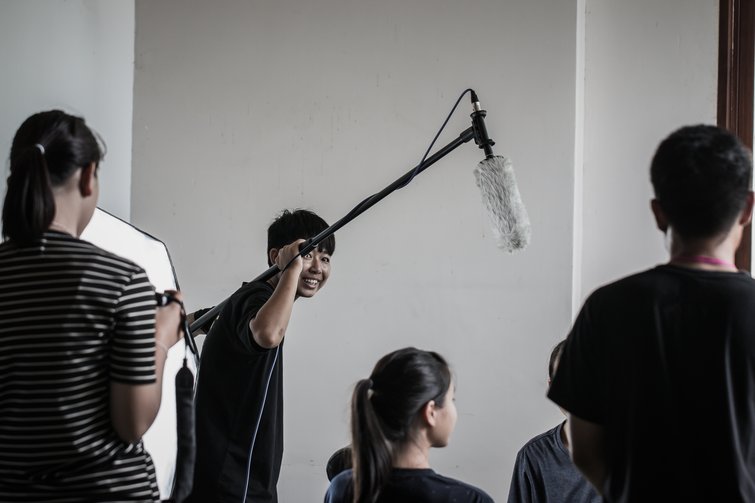
In Tier 2, the student will start to take the basic fundamentals of filmmaking they’re learning and apply them to their own projects. Tier 2 will start to have a little more cohesiveness into the things they’re filming and how the subjects are presented. You’ll start to fiddle around with an NLE (non-linear editor, iMovie, Adobe Premiere, Final Cut X) and pick out shots to include in your edit, rather than uploading the raw video file straight to YouTube. This shows a lot more thought and process into the films that you’re creating, but lacks the refinement and technique found in higher levels of filmmaking.
While a student is still learning and may not have access to professional tools, there are still a few specific pieces of gear I’d associate with this level. A camera would be an entry-level DSLR, like a Canon RP or Fujifilm X-T30. This would typically be paired with either the camera’s “kit lens” or a few inexpensive lenses, like a budget 50mm prime. Along the lines of a tripod, Tier 2 is usually making do with a standard photo tripod rather than a proper fluid head.
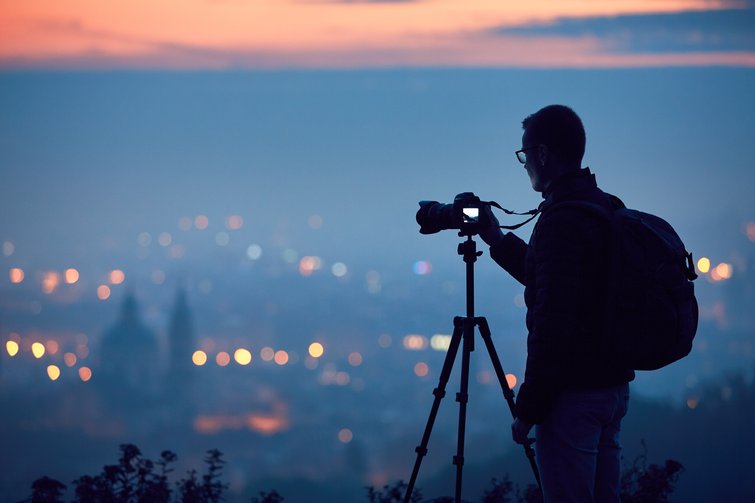
This is the stage a lot of aspiring filmmakers reach, but may never leave. They’ll get their own camera, maybe some additional gear, and start learning the basics. Like any craft, getting good at filmmaking not only takes talent, but a lot of work. This is why people fall off. Taking the time and effort to really nail down proper filmmaking techniques, and the work that goes into it, will definitely launch you into Tier 3.
Tier 3: Low-Budget Professional

Once you’ve nailed down techniques and the process, you’ll start to find paying work coming your way. Being able to craft a video and tell a story has value! At this level, the budget will be small. Depending on the project, that range could be a few hundred to a couple thousand. Projects that fit into a low-budget tier could be a music video for a local artist, a quick commercial for the coffee shop down the street, or a featured Instagram video. The clients you’re dealing with don’t have a lot of capital to put toward a fully-featured production, but they know they want something that they can’t create themselves.
Once you’ve reached Tier 3, gear becomes a bit more important. Tier 3 is a balancing act between having gear you can afford, but also making sure that gear will positively impact your work. Cameras in this category start to be classified in the prosumer category to the entry-level professional. The base starting point would be the Blackmagic Pocket 4K/6K and could range to something like a Sony A7sIII, usually paired with professional-level lenses in the Canon L Series or Sony G-Master line. Pairing a decent fluid head tripod is also important. Luckily, there are a few low-budget, but professional, options from the likes of Manfrotto and Benro.
The obvious downside to this tier is that there’s not a lot of money in it. You don’t have a lot to spend on the project and the production value can suffer. We’ve all been there. Creatives in this tier can often find themselves struggling to make a product they’re happy with, while also being able to eat at the end of the day. There have been moments where I ended up paying myself just a little less to see a larger benefit in the overall project, or even forgo paying myself so we could create one killer music video with a decent budget.
Additionally, the low-budget professional will find themselves wearing basically all of the hats. From writing to directing, shooting, and editing, they’ll have to do it all. This can be a bit exhausting, as all the weight is on one person’s shoulders. Having one person do it all, you’ll find that parts of the pieces may suffer, as you spend more time on one aspect and not enough on another. Sure, your shots are on-point, but the direction could be a little lacking.
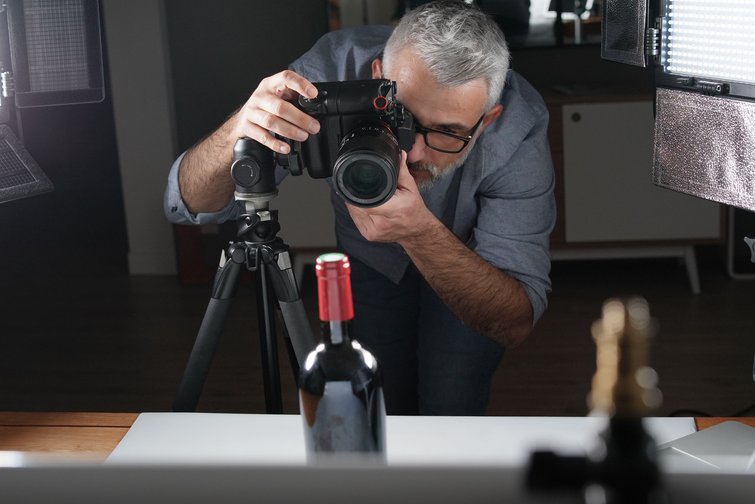
On the other side of the coin, I think there are actually quite a few benefits from being in this tier and you shouldn’t be so quick to want to jump up a notch. In this tier, the low-budget professional is often a jack of all trades, but that comes with a trade off. If you’re at this level, you’ll find yourself with basically full creative control over the project. Now is the time to experiment and try new techniques within different sectors of the process. Have a style you’ve been wanting to replicate or theme to test? Now is your chance!
Get creative with what you have. Ever seen a cooking show where they cook a delicious meal with limited ingredients? Somehow, they make it work and make an awesome meal. Low-budget filmmaking can be just like that. Not being able to afford the latest gear or high-end production equipment is never an excuse for not being creative. Being able to work with what you have at your disposal shows just how creative you can be. The low-budget level will force you to think outside the box and make things work.

Find your niche! As you progress, you’ll find certain aspects of filmmaking that you enjoy more than others or that you’re naturally better at. This is your chance to give each area a shot and refine what you’d like to focus on. As you move up the tiers, roles become more and more specialized and rely on expertise rather than general knowledge.
Tier 4: Mid-Budget Professional
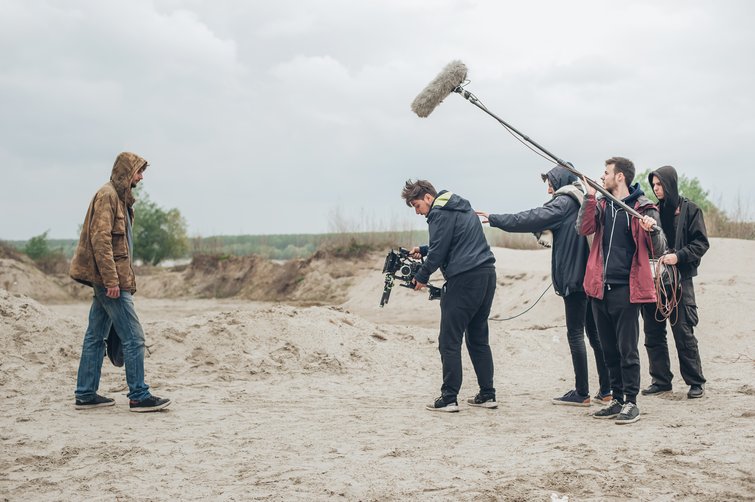
Mid-budget can be a sort of interesting place. At this level, you’ll find that there’s quite a bit more of a budget for the actual production and you’ll also be able to make a living in the film production industry. This level is where a lot of professional creatives make their day-to-day living and have a career. Projects in this tier may include larger local/regional commercials, music videos for recognizable musicians, corporate video clients, and indie-shorts or budget features. At this point, the team on a project expands from one to several, with each person on set taking on a more specialized role. Instead of the one-person crew associated with Tier 3, you’ll have a smaller crew composed of (but not limited to) a director, producer, director of photography, camera assistants, gaffer, audio engineer, art director, and production assistant.
What makes it interesting is that each role may still double up on their responsibilities and be a bit flexible. The director of photography will most likely still be operating the camera or setting up their own lights. The art director may be juggling not only set decoration, but also costuming and makeup. The budget is large enough that everyone can be paid fairly, but not large enough for a giant team of niche roles.
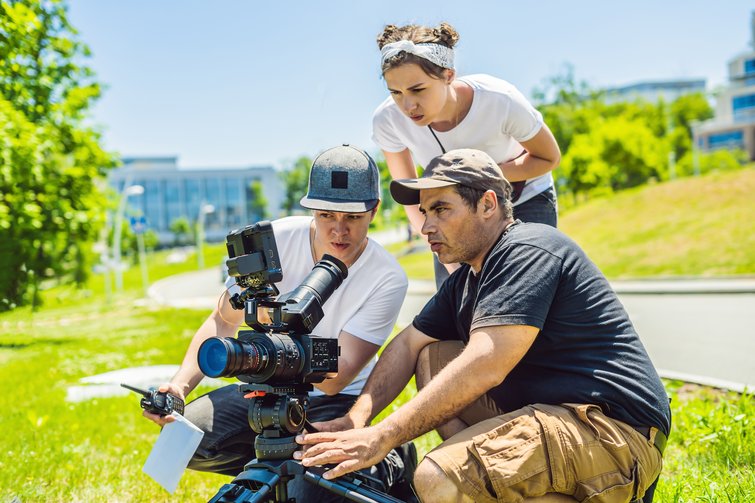
A big benefit with a larger budget is using the proper tools for the job. Instead of making-do with a homemade dolly or an entry-level camera, you’ll be shooting on a proper camera and support gear. Tier 3 may be the DSLR/mirrorless tier, where Tier 4 would have something like a Canon C300 Mark III or RED Komodo, with a set of cine-primes. A set will also typically have a full lighting package to properly light any scene they’re needing to film. Audio will also see a big upgrade, typically with a dedicated audio engineer and their own audio kit, Sennheiser MK 50 boom mic, set of wireless lavs, and a Zoom F8n field recorder. The crew should have the expertise to utilize professional film tools at their disposal to turn out professional-level work.
As you move up the ranks, collaboration is vital in good filmmaking. Tier 4 comes with a few tradeoffs. You’ll be giving up some creative control over a project, but gaining the experience and expertise of others on your set. The reality is, you won’t be an expert in every role needed on a proper set, so passing off that responsibility to others can elevate the overall product. Instead of juggling all aspects of the project, it can allow you to focus on your role and do it well. Additionally, having other creatives around you providing their own input and ideas can improve your work.
Tier 5: Large-Budget Professional
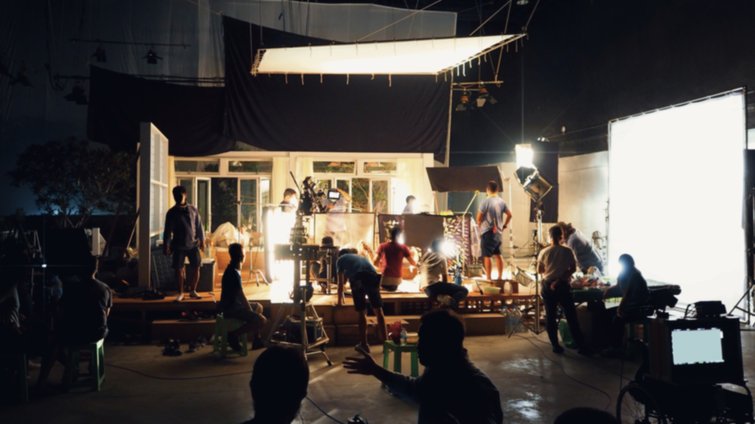
Breaking into the big time is everyone’s dream and a level not everyone can achieve. Making the transition from Tier 4 to Tier 5 can be the largest, most difficult step to achieve. Projects in this level would include feature films, nation-wide commercials, or rock-star music videos. Money on a large-budget project doesn’t really go to the toys and gear, but mostly to the people who make the magic happen. When working on a large-budget project, the cast and crew grow quite a bit bigger.
At this level, you’ll have a specialized role within a specialized department. Each department could include a department head, directing roles within the department, who manage the crew under them and even production assistants dedicated to that department. If you’ve ever stayed for the credits after a movie, you’ll notice just how many people it takes to create a Hollywood film—literally hundreds. The art department could have a hundred or more credits alone.

Within a large-budget production, there’s, well, a lot of money behind it. The production team and financers know that quality talent and product takes a lot of dollars. If a specific piece of gear, set decoration, or costume is necessary for the film, it’ll be budgeted accordingly.
That’s not to say there isn’t a budget the production is bound to, but it can be expected that a specific level of quality comes with a high price, and those behind the film understand that. At this level, you’re not really figuring out how to put together a fancy one-take with a C100 and a Ronin-S. The production will have a talented and dedicated steadicam operator who’s ready for the task, and a team behind him ready to make it happen. A talented crew doesn’t come cheap!
Camera-wise, you’re starting with something like a Canon C500 Mark II, all the way up to the Sony Venice or ARRI ALEXA camera line. Lenses may be along the lines of various ARRI primes or Panavision primes, expensive lenses to match the expensive cameras. Lights, rigging, and support will also match the high-dollar value of the camera setup. In a Hollywood film, you’ll see no expense spared to get the lighting perfect. In Once Upon a Time . . . In Hollywood, DP Robert Richardson used nine condors to light a stretch of highway.
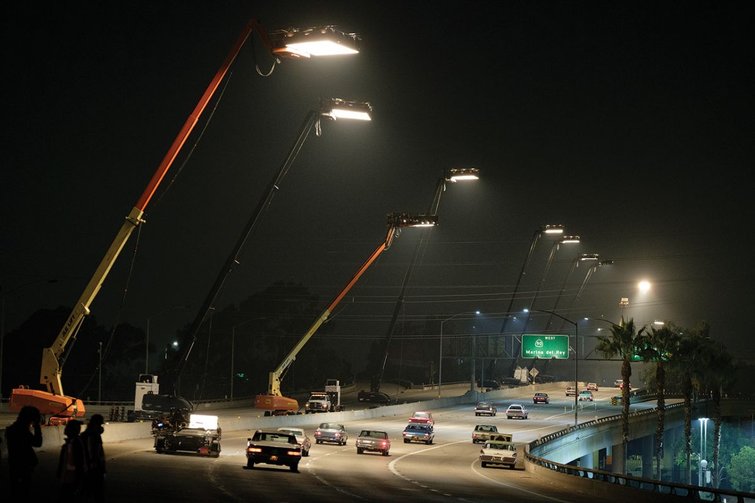
Larger projects, especially in Hollywood, require the crew to be a part of a union, and require the production to adhere to strict guidelines as to who can do what, when, and at what cost. Unions will clearly dictate the roles and duties their members can and cannot do while on set. This makes for a well-oiled machine filled with professionals doing the exact role they were hired to do. If you’re on a union set, you won’t be expected to do something that’s not in your job description. The grip won’t be asked to adjust lights and the gaffer won’t be expected to move any set decorations.
The downside could be that you won’t be able to get a feeling for other roles, therefore, making it difficult to break out of your department. By the time you’ve reached Tier 5, you’ve most-certainly found your niche, but wanting to try something new may be challenging.
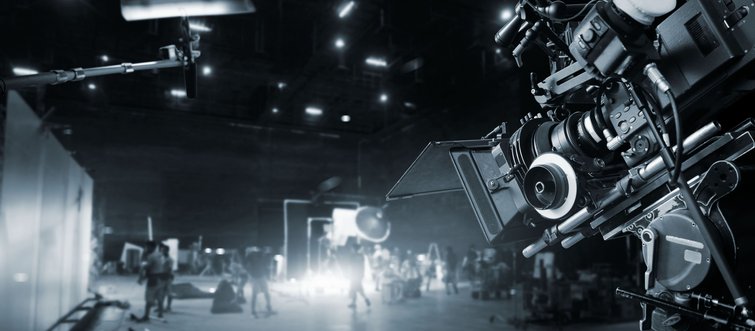
Lastly, breaking into Tier 5 may be difficult for a majority of film professionals based solely on location. You may be able to carve out a healthy living creating films and content in almost any city at the mid-budget level, but large-budget features are routinely only shot in a few select cities or regions. In North America, this includes Los Angeles, Atlanta, New York, Texas, and Vancouver. If you’re outside of these areas, the major projects may be too few and far between to really make a career of it.
One thing to keep in mind is that the level you’re currently operating in doesn’t necessarily dictate the quality of work that you’re able to produce. There have been a few notable cases of low or medium-budget projects making waves in the filmmaking world based on technique and content. For example, Paranormal Activity‘s original budget was about $15,000 (most of which went toward the camera alone). Clerks cost about $27,000 and was financed mostly by Kevin Smith maxing out his credit cards. Money doesn’t necessarily equal quality.
There are tons of talented filmmakers out there who’d be classified in any one of these levels. Being slotted in your current position doesn’t mean you can’t make amazing films or won’t work your way up. There are a lot of pros and cons between each level. Finding a place that you’re most comfortable in and can make credible work at—that’s what’s most important.
Cover image via guruXOX.
For more filmmaking tips and advice, check out these articles:





